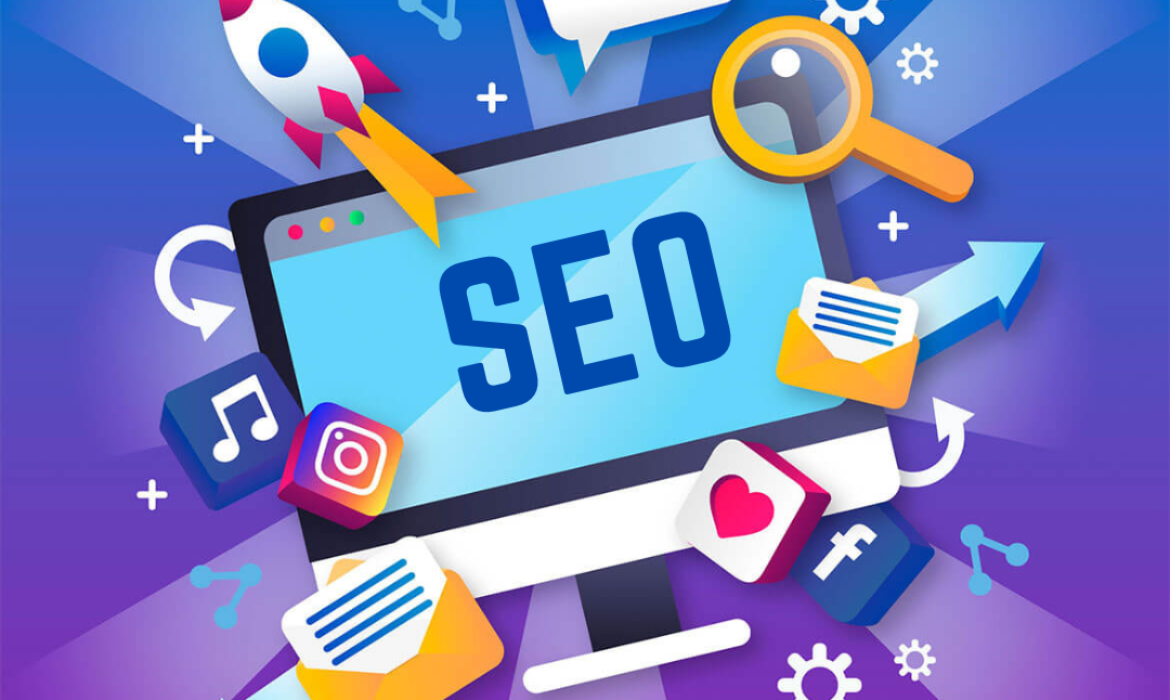Facebook tracking for beginners.
Facebook tracking for beginners…. Why should we use a Facebook pixel? What is it and how does it work?
In this article, we answer the most basic questions about Facebook Tracking.
It helps you understand what a Facebook pixel is and shows you how to set one up. If you’re new to Facebook advertising, or even just new to advertising on the internet, chances are you’ve come across the term “Facebook pixel” and have no idea what it is.
A Facebook pixel is a small piece of code that you can insert into your website to track visitors’ actions. By tracking these actions, you can then create targeted ads that show up in people’s Facebook newsfeeds based on their behavior on your site.
The Facebook pixel can be used to track a wide variety of events, such as when someone views a product on your site, adds a product to their cart, or completes a purchase. You can also use the pixel to create custom audiences for your ads based on people’s actions on your site. For example, you could create a custom audience of people who have visited your site in the last 30 days but have not made a purchase.
You can also use the Facebook pixel to track conversions, which is when someone takes an action that you’ve defined as valuable, such as signing up for your email list or creating an account on your site. Conversion tracking allows you to see how effective your ads are at driving the desired action.
If you’re running any kind of online business
What is Facebook Pixel?
Facebook pixel is an analytics tool that allows you to measure the effectiveness of your advertising by understanding the actions people take on your website. You can use pixel data to:
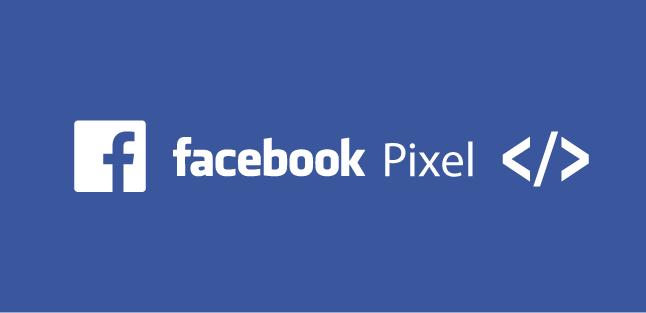
-Build audiences for ad targeting
-Find new customers
-Measure the results of your ads
-Optimise your ad delivery to get better results
To set up a Facebook pixel, you’ll need to add a piece of code to your website. Once you’ve done that, you can start tracking events and collecting data.
How to set up Meta Pixel?

Facebook tracking can be a little daunting for beginners. However, it’s worth taking the time to understand how it works so that you can make the most of its potential. So, what is a Facebook pixel? And how do you set one up?
A Facebook pixel is a piece of code that you insert into your website. It allows you to track conversions, measure ad performance, and build audiences for remarketing purposes.
To set up a Facebook pixel, you’ll need to add the code to your website header. This can be done using a plugin like Insert Headers and Footers if you’re using WordPress. Once the code has been added, you can then start creating events and adding them to your website pages.
There are 9 types of events that you can track: Lead, CompleteRegistration, Contact, CustomizeProduct, Donate, FindLocation, InitiateCheckout, Purchase, Schedule. To find out more about each event type and how to set them up, check out this article from Facebook.
Once you’ve set up your events, you can start creating audiences based on them. For example, you could create an audience of people who have completed a purchase event or an audience of people who have visited your website in the last 30 days.
You can then use these audiences for remarketing purposes; showing them targeted ads that are relevant to their interests. This is an extremely effective way to boost conversions and sales on your website.
Unlock your Ad's Conversions & Audience with Facebook Pixel
Facebook tracking can be a powerful tool for driving conversions and understanding your audience. By installing a Facebook pixel on your website, you can collect data on your website visitors and use that information to create more targeted ads. You can also use the pixel to track conversions, so you can see which of your ads are resulting in sales or other desired actions.
If you’re new to Facebook tracking, or just need a refresher, this guide will walk you through everything you need to know. We’ll cover what a Facebook pixel is, how to set it up, and how to use it to unlock your ad’s potential. Let’s get started!
How to Master the Facebook Pixel?
If you’re running a business, it’s important to understand how the Facebook pixel works and how to set it up correctly. The Facebook pixel is a code that you insert into the header of your website. It allows you to track conversions, remarket to people who have visited your site, and build custom audiences for future advertising.
To setup the pixel, you’ll need to add some code to the header of your website. You can do this yourself or hire a web developer to do it for you. Once the code is added, you’ll need to create a custom audience in Facebook Ads Manager and install the pixel on your website.
Once the pixel is installed, you can start tracking conversions and building custom audiences. To track conversions, you’ll need to create a conversion goal in Facebook Ads Manager. This can be done by going to Tools > Conversion Tracking > Create Conversion Goal.
There are four types of conversion goals: leads, purchases, key page views, and adding items to a cart. Choose the type of conversion that best fits your business objectives and then follow the instructions to set up the goal.
Once you’ve created a conversion goal, you can start building custom audiences. Custom audiences allow you to target people who have already visited your site or taken a specific action on your site (like signing up for a newsletter). To create a custom audience, go to Tools > Audiences > Create Audience and select Custom Audience from the drop-down menu .
There are three types of custom audiences: website visitors, engagement on your website, and people who have taken a specific action on your site. Choose the type of custom audience that best fits your business objectives and then follow the instructions to set up the audience.
Once you’ve set up the pixel and created some custom audiences, you can start running ads on Facebook. To create an ad, go to Ads Manager and select Create Ad from the menu.
Choose your objective, target audience, budget, and ad format. Then design your ad using the Facebook ad builder. Once you’re happy with your ad, click Place Order and your ad will be live on Facebook.
Conclusion
A Facebook Pixel is an analytics tool that allows you to measure the effectiveness of your advertising by understanding the actions people take on your website. By installing a piece of code on your site, called a “pixel,” you can drop cookies on visitors’ browsers and collect data about their actions. This data lets you track conversions, optimise ads, build lookalike audiences, and more. If you’re new to Facebook advertising or just want to learn more about how the pixel works, this guide is for you.
The Ultimate Guide to Content Marketing: What It Is, How It Works, And Why You Should Get Started Today
The Ultimate Guide to Content Marketing: What It Is, How It Works, And Why You Should Get Started Today
Content Marketing is one of the most important marketing strategies you can adopt in order to generate leads, build your brand, and increase your profits. But what exactly is it? And how do you get started? In this article, we’ll explore what content marketing is, how it works, and why partnering with the best digital marketing company in Trivandrum can take your content strategy to new heights.
Content Marketing is one of the most effective ways to attract prospects and customers to your website. It is an online marketing technique that involves the creation of valuable content in order to draw traffic to a company’s blog or website and encourage people who find it interesting to buy their products or services.
How does content marketing work?
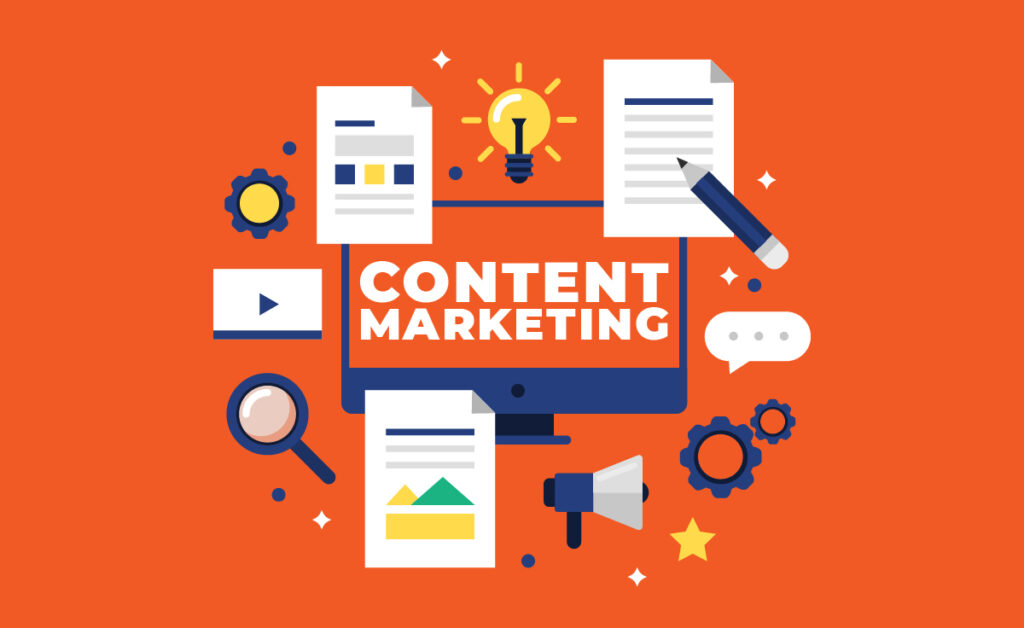
Content marketing works by creating and distributing valuable, relevant, and consistent content to attract and retain a clearly defined audience. The goal is to drive profitable customer action by providing your audience with the information they need to make an informed purchase decision.
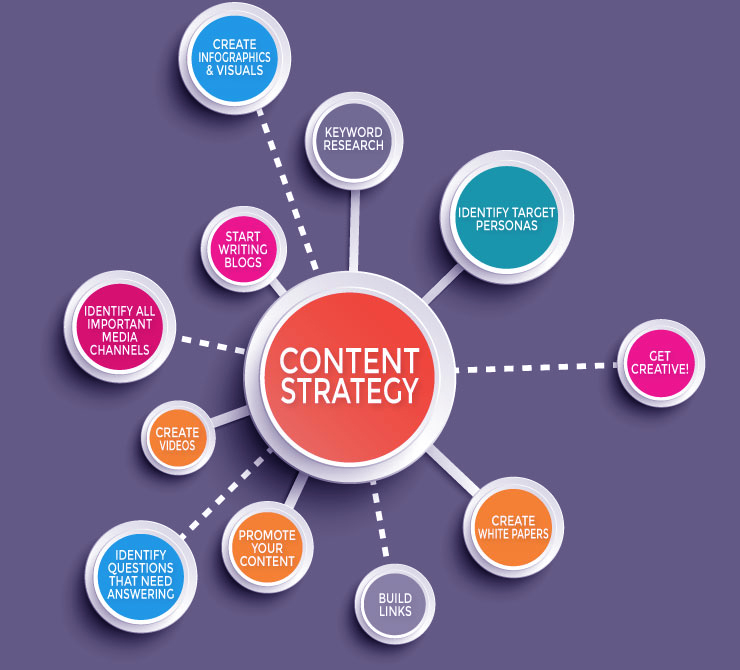
Why should you get started with content marketing?
Content marketing is an essential part of any marketing strategy. It helps you build your brand, generate leads, and increase profits. If you’re not already using content marketing, now is the time to get started.
Content marketing isn’t just about creating great content. It’s also about ensuring that your content is distributed to the right people, at the right time, and in the right format. And it’s about measuring the impact of your content so that you can continue to improve your results over time.
If you’re not already doing content marketing, there’s no time like the present to get started. In this ultimate guide to content marketing, we’ll cover everything you need to know about this essential marketing strategy – from what it is and how it works, to why you should get started today.
What Is Content Marketing?
Content marketing is a strategic marketing approach focused on creating and distributing valuable, relevant, and consistent content to attract and retain a clearly-defined audience — and, ultimately, to drive profitable customer action.
It’s an ongoing process that helps you create valuable assets that people want to consume, share, and link to. This, in turn, drives awareness and engagement with your brand and business.
Why should you care about content marketing? Because it works.
A well-executed content marketing strategy will help you:
Attract more visitors to your website
Engage your audience and build meaningful relationships
Generate leads and customers for your business
Grow your brand awareness and reputation
Drive traffic and sales for your business
Why You Should Be Doing Content Marketing Right Now
The benefits of content marketing are vast and varied, but there are four key reasons why you should be doing it right now:
- Content marketing builds trust and credibility.
- It helps you to connect with your target audience on a deeper level.
- It can help you to boost your SEO efforts and increase your visibility online.
- It is an extremely effective way to generate leads and drive sales.
If you’re not already incorporating content marketing into your digital marketing strategy, then you’re missing out on a huge opportunity to reach and engage your target audience. So what are you waiting for? Get started today!
How To Make Sure Your Content Marketing Campaigns Deliver The Results You Want
As a business owner or marketing manager, you’re always looking for ways to improve your company’s bottom line. One of the best ways to do this is to focus on content marketing.
If you’re not sure where to start with content marketing, or if you’re looking for ways to make sure your campaigns are as effective as possible, read on for our top tips.
1.Define Your Target Audience
The first step in any successful content marketing campaign is to define your target audience. This will help you determine what kind of content will be most relevant and valuable to them.
To get started, consider who you want to reach with your content. What are their demographics? What are their interests? What needs or pain points do they have that your product or service can help address? Once you have a good understanding of your target audience, you can begin creating content that appeals directly to them.
2.Set Your Goals And KPIs
Before you start producing any content, it’s important that you set some clear goals for your campaign. What do you hope to achieve? Do you want to increase brand awareness? Drive more traffic to your website? Generate more leads or sales? Make sure your goals are specific, measurable, achievable , relevant, and time-bound (SMART).
In addition to setting overall goals for your campaign, you’ll also want to establish some key performance indicators (KPIs) to track your progress. Which metrics will you use to measure success? Pageviews? Time on site? Engagement? Conversions? By establishing KPIs upfront, you can more easily track and measure the success of your content marketing campaigns.
3.Create Compelling Content
Once you know who you’re targeting and what you hope to achieve, it’s time to start creating content. But not just any content — your content must be compelling if you want people to read it, share it, and take action.
Some tips for creating compelling content include:
Keep it interesting: Write headlines that make people want to click, and make sure your articles are well-written and engaging from start to finish.
Write headlines that make people want to click, and make sure your articles are well-written and engaging from start to finish. Be helpful: Write articles that solve problems or answer questions your target audience is likely to have. If possible, include step-by-step instructions or helpful tips and resources.
Write articles that solve problems or answer questions your target audience is likely to have. If possible, include step-by-step instructions or helpful tips and resources. Be original: With so much content already out there, it can be tough to stand out from the crowd. But if you can find a unique angle or offer a fresh perspective, you’ll be more likely to capture attention.
With so much content already out there, it can be tough to stand out from the crowd. But if you can find a unique angle or offer a fresh perspective, you’ll be more likely to capture attention. Use visuals: People are more likely to engage with and remember content that includes images, videos, infographics, and other types of visuals.
4.Promote Your Content
Once you’ve created some great content, it’s time to start promoting it. There are a number of different ways you can promote your content, including:
Social media: Share your articles on social media sites like Facebook , Twitter , Instagram , and LinkedIn . You can also use paid social media advertising to reach a wider audience.
Share your articles on social media sites like Facebook , Twitter , Instagram , and LinkedIn . You can also use paid social media advertising to reach a wider audience. Email marketing: Include links to your latest blog post or video in your email newsletter or send out standalone emails promoting your content.
Include links to your latest blog post or video in your email newsletter or send out standalone emails promoting your content. Influencer marketing: Reach out to influencers in your industry and ask them to share your content with their followers.
Reach out to influencers in your industry and ask them to share your content with their followers. Paid advertising: Invest in paid search or display advertising to get your content in front of people who are already interested in what you have to offer.
5.Analyse And Adjust Your Campaign
Last but not least, don’t forget to analyse the results of your content marketing campaigns and make adjustments as needed. Which types of content are performing best? What topics are most popular with your target audience? What’s the average conversion rate for each piece of content?
By regularly analysing your content marketing campaigns, you can fine-tune your approach and ensure that you’re creating and promoting the right kind of content to achieve your desired results.
Growing Your Audience Through Content Marketing
Growing your audience through content marketing is a process of creating and distributing valuable, relevant, and consistent content to attract and retain a defined audience and get profitable customer action.
Content marketing is an ongoing commitment that requires time, resources, and consistency to be successful. The first step is understanding your audience and what type of content will resonate with them. Then, you need to create this content (or have someone else create it for you), promote it across multiple channels, and measure its performance to ensure you’re reaching your target audience and achieving your business goals.
While it may seem like a lot of work, the benefits of content marketing are well worth the effort. By building a loyal following of engaged customers, you’ll be able to generate more leads, close more sales, and drive long-term growth for your business.
Important Things To Keep In Mind When Creating A Content Marketing Campaign
When creating a content marketing campaign, it’s important to keep a few things in mind. First, you need to have a clear goal for your campaign. What are you trying to achieve? Second, you need to create content that is interesting and useful to your target audience. This content should be well-written and visually appealing. Finally, you need to promote your content through social media and other channels. Only by doing all of these things can you hope to achieve success with your content marketing campaign.
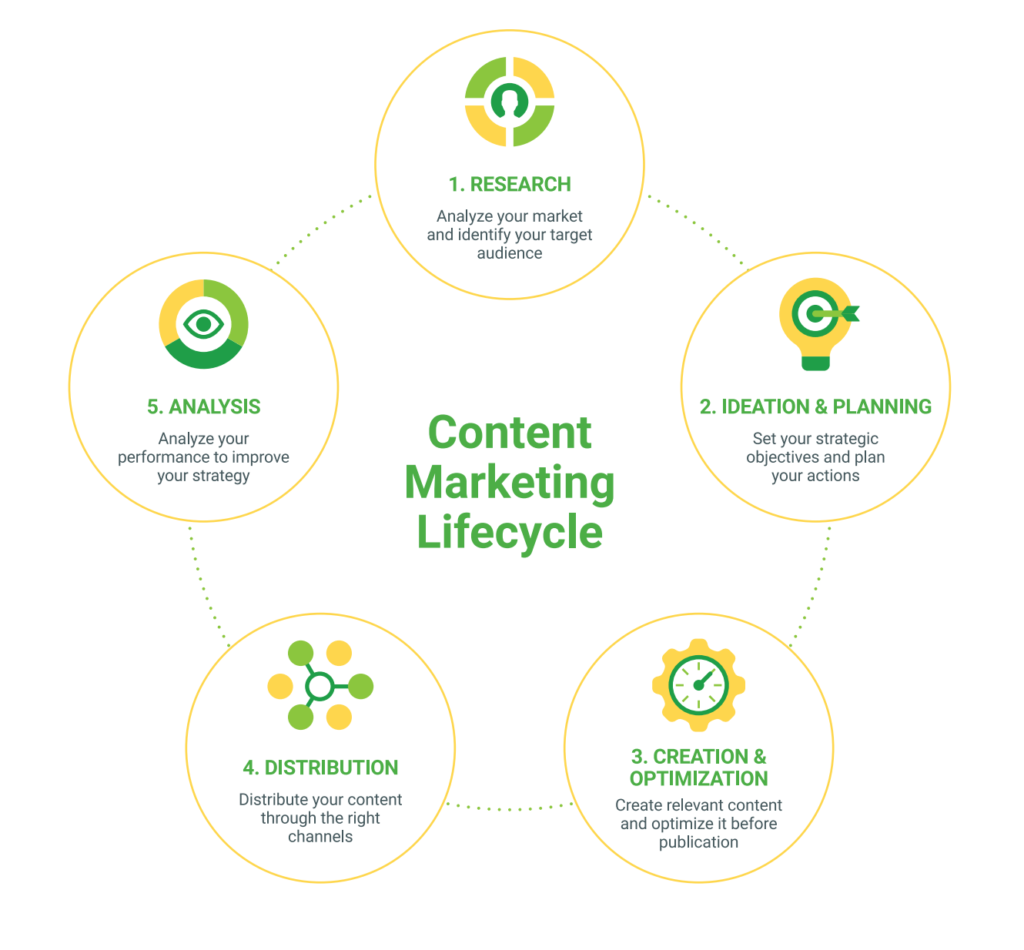
Dos And Don'ts Of Creating A Campaign
There are a few dos and don’ts to keep in mind when creating a content marketing campaign. First, do create interesting and useful content. This content should be well-written and visually appealing. Second, do promote your content through social media and other channels. Only by doing these things can you hope to achieve success with your content marketing campaign. Finally, don’t forget to measure the results of your campaign so that you can improve it over time.
Get Started with the Best Digital Marketing Company in Trivandrum
If you’re ready to harness the power of content marketing to grow your business, partnering with the best digital marketing company in Trivandrum is the first step towards success. With their expertise, experience, and innovative strategies, they can help you develop and execute a results-driven content marketing strategy that drives real business outcomes.
Don’t wait any longer—start your content marketing journey today and unlock the full potential of your business with the best digital marketing company in Trivandrum by your side.
How To Create An Ultimate Facebook Marketing Strategy????
How to create the ultimate Facebook marketing strategy for your business with a simple 5 step method approach.
Facebook is simply the best marketing tool for your small business in 2022 and it doesn’t matter what industry you are in..
With 2.2 billion users today chances are your customers on Facebook…. In this blog i am going to lay out for you the ultimate Facebook marketing strategy for your small business in 2022….
Hey!!! If You are new here and you are looking for best practices on how to grow your business on social media

Then Lets get started …
In fact it is estimated that over a billion dollar is going to shift from traditional marketing to Facebook and social media marketing in the next 12 to 18 months and with this limited advertising space the price is going to up and up and up…..and don’t even think about organic reach .Organic reach has been declining for the last 2 years and we might as well call it dead..
Well today I’m going to give you the ultimate Facebook marketing strategy for your business ..
I’m sure is going to be a great fit..
The strategy consists of 5 steps and they are
- Content Creation
- Content Marketing
- Retargeted card capture
- Retargeting & Nurturing
- Closing the deal

Let's start with Content Creation…
Facebook is a content consumption machine, thats all were “You & I” were go and find interesting contents , pictures, videos etc…and very the beginning you need to know that people do not go to Facebook to buy or sell something but also they were nervous to buy any stuff. So the first step in content creation is to create something that they want to see, Maybe it is entertaining content or maybe educational content or else relevant to their business or industry.. What ever the content maybe make it relevant and worthy of their attention..

Next one is Content Marketing

Sharing contents with friends and family is a great thing but it is not enough. A few things that are really important that you need to know firstly is the content you are sharing on Facebook lives on a different platform. For example, Make sure your website must install Facebook pixel .It is just important. If you are not aware of Facebook pixel , Just check out my blog dealing with Facebook pixel….
The next step you need to know, Is the basics of Facebook Advertising . I strongly suggest that you must learn, How to create a Facebook marketing campaign. After that you need to getting back to the people that have already consumed content on your Facebook and find people within our targeted audience who want something we can offer..As per the marketing law you must be in front of people at least 5 or 6 times before they are ready to make a decision, that means we need to find a way to put more content in front of them to that make interest to buy our content..
Capture your audience with email or subscription
My Facebook Marketing strategy have a slightly different approach. Because i know that Facebook ads are going to go up and up day by day. My suggestion would be, try to capture the people that are consuming your content through different platform like email or subscription or else.. So you can communicate with them via different platforms by retargeting campaigns. Retargeting campaigns help to target the people that have already consumed your content and you can communicate with them via different platform..
For example you could ask your retargeted audience to join a Facebook group that you have created or signup for a newsletter Or calling directly at your phone number or asking for a free consultation ..You are now building a list of people that will overtime after six or seven times will buy your products.. this is called Nurturing
In Nurturing stage you should be focused on creating content that provides value to them . Give them advice, the useful tips and also provide value to them. Then only the sales pitch begins .. Personally i like to use the 10 : 1 ration, Means provide value 10 times at-least to the prospect before you ask them to buy. When you make an offer to the audience ..please make sure to use a sense of urgency tell them that there is a limited availability for the offer . If they don’t take the offer, well you can simply retarget them with providing other 5 0r 6 valuable content and make another offers for them….This is were the formula for the “Ultimate Digital Marketing Strategy “
Made Digital Marketing Simple…
Ultimate free guide to marketing and branding your business online.
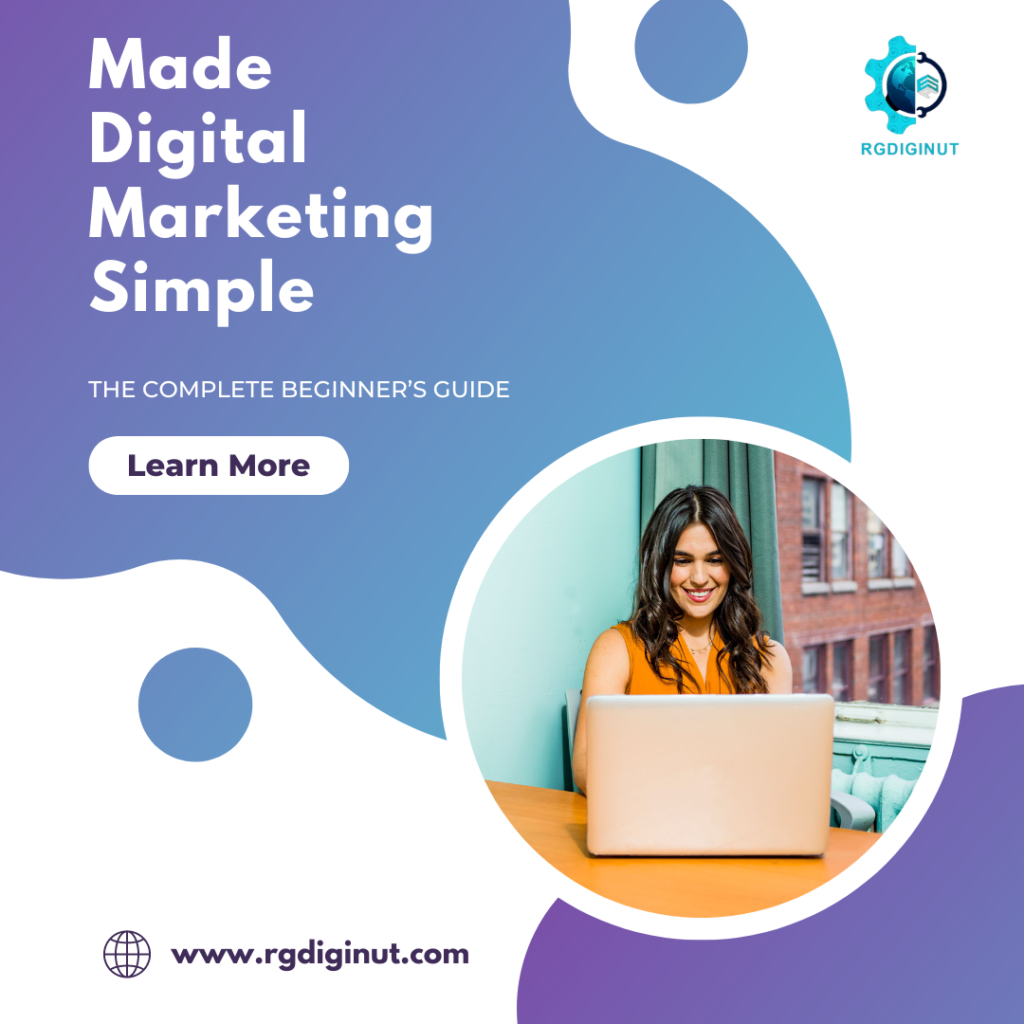
The ideas of marketing as it is understood in the modern era began during the time of the Industrial Revolution. It was a time of rapid social change motivated by innovations in the scientific and technological industries. Mass production of products by the industries created a need for producers to find better ways to market products to customers and inform customers about these commodities. To be successful in business ,entrepreneurs need to expand the market to each and every corner.Digital Marketing is the most existing game in the world right now which empowers business as well as your career…
This blog guide to learn :
What is digital marketing?
How can we empower business sectors through digital marketing?
But also equip every person interested in learning Digital marketing….
It is a truth that DM has significantly altered the online landscape.
Are you wondering how?? Why DM is so important in this modern era..
DM is nothing but advertising delivered through digital channels such as social media, email, web applications, websites, search engines, mobile applications or any other digital channels possible.
That means
“Encompasses any form of marketing products or services that involves electronic devices”.
We can create and experiment with a variety of marketing tactics on a budget. These Marketing strategies/tactics must constantly grow and evolve in order to stay relevant customers.
Like human legs which help to stand and move the body. Digital Marketing also has a pair of legs which helps to stand erect and moves in a balanced manner, which will be called on-page and off-page marketing.
Why Digital Marketing?
- Encompasses All Marketing Efforts online
- Can create and experiment with a variety of marketing tactics on a budget
- No of endless possibilities for marketing and finding relevant customers through online strategic includes email, social media, video etc..
Digital Marketing Strategies or components.
- SEO – Search Engine Optimisation
- SEM – Search Engine Marketing
- SMO – Social Media Optimisation
- SMM – Social Media Marketing
- Affiliated Marketing
- Native Advertising
- Marketing Automation
- Email Marketing
- Watsup Marketing
- Mobile Marketing
- Web Analytics and Reporting
- Content Marketing
- Conversion Rate Optimisation
- Sales Feunnel
THE ULTIMATE BEGINNER’S GUIDE TO UNDERSTANDING SEO AND MASTERING IT
It stands for “Search Engine Optimization” and the name itself gives an explanation.
Let’s note down the best definition of what SEO is .
SEO is the process of making a website easier to understand by search engines. That means it help to optimise your website to get better rankings on search engines like Google, Bing, DuckDuckGo, etc.The main goal of SEO is to increase organic traffic from search engines by improving the positions the website appears in the SERPS for various search terms.SEO is one of the most powerful digital marketing tools for any type of website. An SEO optimised website enjoys high visibility in Search engines and improves the user experience.
We know that Google is the largest Search Engine alive, most SEO practices are geared towards Google’s policies and algorithms. Nevertheless, they work similarly for other search engines too.
But, why should I care about SEO?
That seems like an obvious question for those who’ve managed to get a good following on social channels and drive traffic from there.
Irrespective of whether or not you’re getting traffic from social media, you should put your efforts on SEO. Because it can get you very-specific, high-intent, and free traffic.
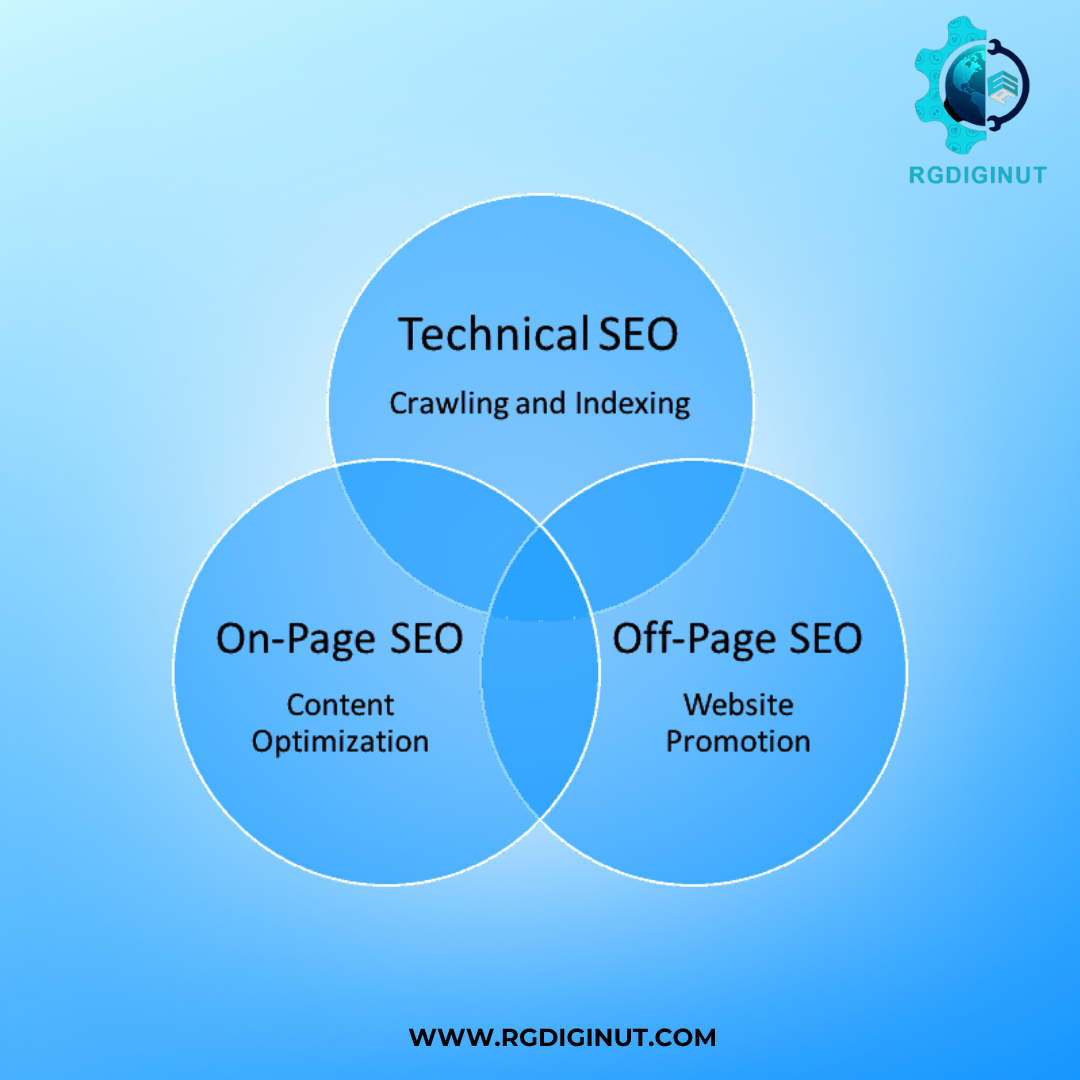
Types of SEO
Search Engine Optimization or SEO is a complex process.There are a number of different types of SEO.But all SEO types have the same goal: To optimise a website for greater visibility in search engines.When optimising a website on search engines, we need to consider & satisfy hundreds of SEO factors & rules.
To make it easier to handle the seo , it is divided into different types of SEO. Each type is responsible for a number of SEO rules.What is important to understand is that these subsets of SEO are not a different process, it’s just a way of breaking down a complicated process into several smaller processes that are easier to manage.
So, the various SEO types are
Technical SEO
On-Page SEO
Content SEO
Off-Page SEO
Local SEO
Mobile SEO
eCommerce SEO
Technical SEO
When it comes to Technical SEO,It is exactly what the name implies. That means, the technical parameters that affect the visibility of a website in search engines.
The main goal of technical SEO is to ensure that search engine crawlers can crawl and index a website without any problems.
The most important technical SEO guidelines are:
Check and optimise your robots.txt to make sure that search engines can correctly access your website.
Add and verify your website with Google Search Console and specify your preferred domain.
Add Google analytics to your website to analyse the traffic.
Create an XML Sitemap and submit it to major search engines.
Optimise your site structure and URL structure.
Follow SEO Friendly web design
Create websites that load / perform fast on both desktop and mobile.
On-Page SEO
It involves any and everything you do on your website to make it Google-friendly, that means it has to do with the page itself and make it friendlier to search engines and users. Here you have direct control over on-page SEO and you can tweak it as per your needs as long as it doesn’t worsen the user experience. We know that search engines crawl a website as a whole and the ranking is performed on a page level basis.So it’s important to pay attention to the optimization of each and every page on your website.
Important on-page SEO guidelines are:
Optimise your page titles. Page titles are shown in the search results.The title of a page should also give search engine bots enough clues on what the page content is all about.You should be able to write catchy headlines and add your SEO keyword in it. Google typically displays 50-60 characters of the title, so keep your title under 60 characters.
Optimise your H1 Tag. H1 tag is what is shown as the top heading of a page. An optimised page has only one H1 tag which has the same importance as per the page title.
Optimise your H2, H3 headings. Besides the H1 tag a page needs to have sub headings (H2, H3). In case of long form content, subheadings make the page easier to read by users and scan by crawlers.
SEO for Images.No one likes to read a wall of texts. Add relevant images throughout your article and make it easy to go through. You can add screenshots, graphs, illustrations, infographics, or other media. Make sure to describe each image with a proper name and “alt text”.Any images used on a page should be properly optimised, otherwise search engines cannot understand what they represent. Things like optimising the filename, file size and ALT text are important for image SEO.
Page formatting. Publishing a page with text and images without spending time to beautify the content is not a good SEO practice. Although Google cannot ‘see’ a page like a human, they have ways to understand how a page looks or if it’s full of ads and popups and this is taken into account during the ranking process.
Internal and External Links: A proper SEO optimised page contains internal and external links. Links that point to your other articles (on the same site) are called internal links. you should add at least 5-6 internal links in each article. Similarly, links pointing out to other sites are known as external links .Depending on the article / website, you should add at least 2-3 external links.
Content SEO
Content SEO is also a subset of on-page SEO. It is all about the quality of the content .Publishing great content that users love, but also using proper keywords which make the search engines can easily understand / crawl, is the winning combination.
To achieve this, you can follow these guidelines:
Start your content creation process with keyword research. Find the SEO keywords that are important for your website and incorporate them in your content.
Look for long-tail keywords and add them to your titles, headings and main content.
Publish content that is thorough and long enough so that users can get what they want and search engines to have enough clues to understand the context of your content.
Link content to high-quality websites and to other pages of your website to help users learn more about a topic.
Make use of schemas and structured data to pinpoint to search engines important parts of your content.
Off Page SEO
It involves things that you don’t have direct control over and is not something you do on your website. Actual off-page SEO is all about promotion. While the previous SEO types concentrated more on the website infrastructure and content, off-page SEO has to do with techniques you can use to promote your website on the Internet.
Websites that are popular are more likely to rank higher on Google than less popular websites.
The most important off-page SEO methods are:
Link Building. Link building is the process of getting SEO backlinks from other websites.In simple terms, it’s like a voting system, when another website or web page on the internet links to your site, you earn a backlink.By linking to your pages, other site owners are saying to Google that your site is good and contains useful information.
Brand Promotion. Google likes to rank known brands high in the results because people trust them.
Social Shares: When your articles get shared on social channels and get good engagement, it sends a positive signal to Google.
Local SEO
Local SEO is a type of SEO suited for local businesses only.
In other words, if you have a website and your goal is to get clients visiting your local store, then you should optimise your website for local SEO.
Everything that is mentioned above is valid for Local SEO, with the addition of the following guidelines:
Make sure that you have your business name, address, contact details on all pages of your website or Add the Local Business schema on your homepage
Create a Google My Business Account is the key part of Local SEO
Register your business with trusted directories .
Promote your website on local directories and websites
Mobile SEO
Mobile SEO is also a subset of SEO specific for mobile devices.
We know that more than 60% of Google searches are now performed on mobile devices.Which shows that the Internet is moving away from the traditional desktop and goes to mobile devices.
This is also the reason that Google decided to create a mobile-first index and start indexing the mobile friendly version of a website instead of the desktop version.
When working on Mobile SEO, you need to make sure that:
Your website is mobile friendly ( BOth in Android & IOS )
The website loads fast on mobile.
The website is easy to use on mobile.
The user experience on mobile is not disturbed by interstitial banners, other methods of aggressive advertising or pop ups.
eCommerce SEO
When it comes to search engine optimisation, optimising an e-commerce website is more complex than working on a blog or corporate website.You have way more pages to optimise and it’s much more difficult to promote an E-commerce website.
The most important eCommerce SEO factors are:
Optimisation of an online shop starts with the homepage and category pages. These two page types have to be properly optimised before you start working on your product pages.
Optimise your product pages based on the results of your keyword research.
Optimise images, videos etc.
Thinking About White Hat SEO vs Black Hat SEO ?
White hat SEO refers to any practice that improves your search rankings on a search engine results page by maintaining the terms and conditions of Search Engine. All the methods described above were ‘White Hat SEO’ techniques and if you follow them correctly, you will eventually be able to rank high on search engines and get a portion of the search engine traffic.
Is black hat SEO a type of SEO?
Some people consider ‘black hat SEO’ as being a type of SEO and this creates a confusion for beginners.
Black hat SEO is just a term that is used to describe any actions taken to trick search engine algorithms. It increases a site or page’s rank in search engines by violating the search engines’ terms of service. From time to time a lot of people come up with ideas on how to artificially create links to improve the rankings of a website on Google. These methods are against Google guidelines and should be avoided.
The only outcome from following black hat techniques is to lose your Google rankings and trust, get penalised by Google and diminish your chances of achieving any rankings in Google ever again.
Cum et essent similique. Inani propriae menandri sed in. Pericula expetendis has no,
quo populo forensibus contentiones et, nibh error in per.Denis Robinson
As your budget progresses and evolves, continue referring to your SMART objectives. Stay focused and remember your goals – they will always inform what your next step will be!

